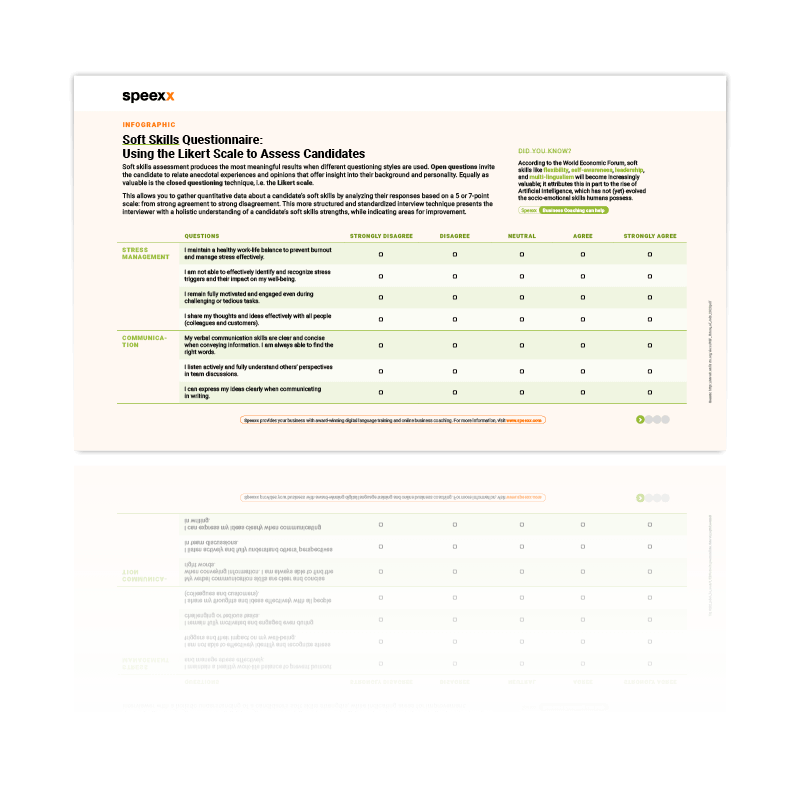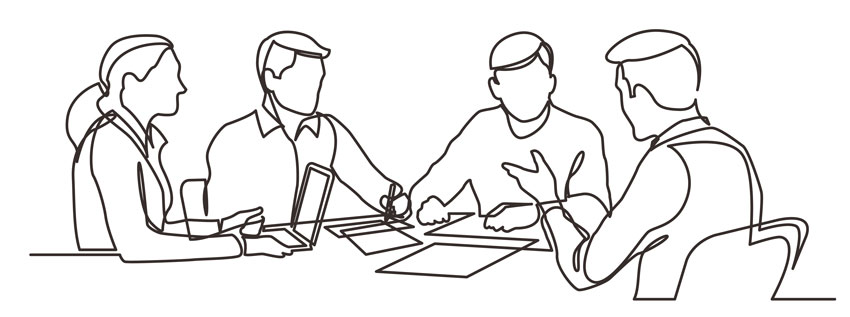The art of leadership is complex and diverse. In 2002, Daniel Goleman in his book “Primal Leadership – Unleashing the Power of Emotional Intelligence” speaks of six leadership styles – authoritarian, coercive, democratic, empathic, intrusive, and motivational – and thus laid a foundation for understanding different approaches to leadership. But is that all of them?

A successful leadership style is shaped not only by individual attitudes and personal preferences, but by a complex adaptation to the unique personalities, strengths and weaknesses of team members, the goals set, and the current situation of the organization.
In the Spotlight: 8 Modern Leadership Styles
This article looks at eight very different modern leadership styles that have proven themselves successful in today’s business environment. What characterizes them? What soft skills are needed to master them? And in what situations are they most suitable?
1. Authoritarian Style
- Goal: Clarity in times of uncertainty
- Advantages: Promotes motivation, group togetherness, and a strong personal bond between team members and the leader
- Soft Skills: Initiative, self-control, the will to succeed with “whatever the cost” thinking
- Most suitable during a crisis or period of disruption, but should be used cautiously to avoid a decline in motivation or risk burnout
2) Democratic Style
- Goal: Working together to achieve a shared goal
- Advantages: Every contribution counts, thus individual contributions are valued, and collaboration, communication, and community are fostered
- Soft skills: Collaboration, communication skills, and interest in other opinions
- Most suitable in situations that are new to everyone and require effective collaboration, such as the implementation of a new system or workflow
3) Empathic Style
- Goal: Strengthen interpersonal relationships, promote harmony, and team spirit.
- Advantages: Empathy as a tool for collective problem solving, motivation through working towards a common goal, and sense of belonging
- Soft skills: empathy, patience, and conflict management
- Most suitable in situations with high stress potential, where there is pressure on the entire team, as well as on individual members, and collective problem solving is needed, for example when the team is in the “hot phase” of a project
4) Pushy Style
- Goal: Balance pressure and presence to keep the team motivated
- Benefits: Makes achievement of ambitious, challenging goals more possible
- Soft skills: initiative and the will to succeed
- Most suitable for ambitious scenarios, but caution is needed to avoid micromanagement and employee burnout
5) Motivational Style
- Goal: Achieve individual objectives to contribute to overall success
- Benefits: promotes a sense of belonging to the company and motivation of employees
- Soft skills: attentiveness, active listening, and empathy.
- Most effective in situations where you want to invest in long-term employability and where you want to keep employees at the center
6) Visionary Style
- Goal: To crystallize big dreams and pursue collective successes
- Benefits: Inspires and motivates the entire team, helps communicate a clear vision
- Soft skills: self-confidence, empathy, perseverance, and persuasion
- Most applicable in start-ups or companies that want to take a new direction and are still working on their positioning in the market
7) Gentle Style
- Goal: Appreciate individual strengths, encourage talents
- Advantages: Humanity as key to success, sense of connectedness
- Soft skills: active listening, empathy, and encouragement
- Most useful in situations where talent is wasted by entrenched patterns and outdated hierarchies. When companies focus on structures that are characterized by inspiration, motivation, and collective responsibility.
8) Feminine Style
- Goal: Encourage talent through interpersonal relationships
- Advantages: Even in complex and fast-paced ecosystems, interpersonal relationships are built to achieve the common goal
- Soft skills: listening, trust, inclusion, and collaboration
- Most suitable where a diverse set of people are involved in situations characterized by rapid change

Get a free infographic now!
Anatomy of a Modern Leader
While analyzing the different leadership styles offers valuable insights into the nuances and subtleties of leadership, it is important to understand that in our ever-changing world, it is no longer sufficient to commit to a single style. The business world has evolved into a complex system where flexibility and adaptability have become key skills for leaders. A leadership style that was successful yesterday may no longer be the optimal choice today.
Thus, a truly effective leadership style is not just a collection of traits, but a fine-tuning that requires the ability to adapt to circumstances and adjust leadership style to constant changes. It is an art that turns away from rigid models and opens itself to individual development, dialogue, and adaptation. A leadership style is thus no longer understood as a monolithic concept, but as a dynamic essence, in short: agile leadership.
Agile Leadership
Agile leadership means embracing the unknown, seeing change as an opportunity, and responding quickly to changing circumstances. It requires the ability to draw from different leadership styles and adapt them depending on the situation and the team’s individual needs. This flexibility enables leaders to keep pace with the turbulent demands of the modern business world.
A leader who practices this agility becomes a bridge between distinctive styles – acting as a connector or conductor to create a harmonious interplay of these styles. This adaptability is essential in the contemporary business environment where change and flexibility are highly valued.
But what soft skills make an agile leader? An article by Deloitte lists the following competencies:
- Self-management: this requires a high level of self-reflection and delegation skills
- Team or collaboration skills
- Problem-solving ability
- Agile method capability: true agile leadership only happens if the manager himself has a strong understanding of agile methods, processes, and principles
- Communication skills
- Ability to proactively manage change
“The agile environment has increased complexity and should therefore have leaders who are able to proactively manage necessary change despite uncertainty and the fear of failure.”
In a world characterized by uncertainty and rapid change, agile leaders are the ones who pave the way, hold the team together, and keep the company on track.
Modern Leadership Styles: Focus on People
Numbers are facts and therefore the most important currency in business life. But the success of a company – at least if you want to survive in the modern working world – should not be measured by numbers alone. One could say that the true success of a company goes far beyond the numbers – the human factor is the key to leading a company to success.
Technology and innovation merge with the people factor to create an unbeatable equation for success – plus, customers become more satisfied and employees more productive.
The Human Factor in the Equation for Business Success
It is easy to be awed by the wonders of modern technology – particularly AI (Artificial Intelligence) – however, L&D and HR experts should always focus on the human factor in this equation.
To represent these relationships in harmony as a mathematical equation, it would look something like this:
Technology + Innovation / Human Factor = Business Success.

Find out with our free questionnaire!
Recognizing the Value of Human Influence
It is imperative to thoroughly assess the importance of human impact within your organization. Three key questions can provide valuable insights:
- Soft Skills Enhancement: How sharp are your managers’ soft skills? From leadership and communication capabilities to emotional intelligence, nurturing these skills is paramount.
- Employee Contentment: Is employee satisfaction prioritized in your company? Contented employees tend to be more productive and engaged, directly impacting an organization’s overall success. You could also consider using the Net Promoter Score (NPS), typically employed to gauge customer satisfaction, to assess the well-being of your workforce.
- Empowerment & Employee Voice: Do your employees have a say in their own professional growth? The contemporary workplace requires an environment that encourages individual development and career planning. However, according to Deloitte, only 59% of respondents feel that their company fully or partially empowers employees to shape their own career paths.
Modern Leadership Styles: Nurturing the Learner
Providing learning content that your team can access from anywhere is an important first step. However, genuine development occurs when employees proactively take responsibility for their own personal development. This means capitalizing on their learning progress, along with the available training opportunities and resources, to maximize their contributions to both themselves and the company.”
A culture of shared learning, engagement, and development is key to motivating people to learn independently. In the complex world of modern management, there are countless opportunities to develop talent, inspire teams, and lead organizations to peak performance.
Create a future of humanity, success, and innovation.



